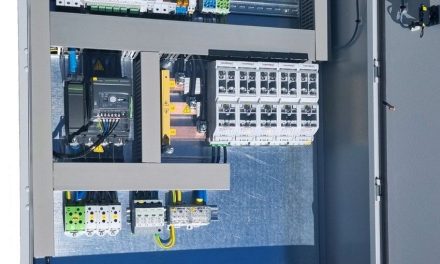 Advertisement Feature
Advertisement Feature
Fire detection systems in industrial and commercial applications have traditionally used hard wired installations, which are generally installed during construction or refurbishment, making the laying of cables less of an issue. However, certain applications need a different approach, as Paul Pope of Apollo Fire Detectors explains
It can be very difficult to introduce cable runs into buildings that are not designed for the modern age. It may also be that a collection of buildings, such as an open air museum, requires fire protection, but is not suitable for normal wired systems. It is for buildings of this kind that Apollo Fire Detectors has developed its wireless XPander product.
Designed for use in areas where hard wired fire detection is impossible or impractical, XPander devices are well suited to applications such as occupied buildings, listed buildings, heritage sites, castles and stately homes, annexes and temporary structures. All of these building types are likely to have strict rules regarding alteration to the original fabric of the structure, or would be negatively affected by the impact and inconvenience of re-wiring work or installing traditional fire systems. In these circumstances, channelling and wiring for traditional fire detection could cause damage to interiors as well as disruption for building users during installation.
 XPander devices can be found in The Royal Albert Hall (London), Marianske Lazne Theatre (Czech Republic) and The Guildhall (Portsmouth), to name but a few.
XPander devices can be found in The Royal Albert Hall (London), Marianske Lazne Theatre (Czech Republic) and The Guildhall (Portsmouth), to name but a few.
Buildings that are undergoing fire system refurbishment can also benefit from wireless devices. In this instance, wireless fire detectors can be used to provide temporary cover until the old fire system is decommissioned and a new hard wired fire system can be installed.
Wireless technology offers a number of benefits over traditional hard wired systems – the installation process is greatly simplified, costs associated with potential damage to buildings are lower, the risk of business disruption is reduced and the technology is flexible, adaptable and cost effective. What’s more, the technology can provide protection to any building type, layout or structure.
Why XPander?
Apollo’s XPander solution incorporates individual detectors, call points, interfaces and alarm devices in one system that communicates with the Apollo analogue addressable loop by radio signals.
The range includes an optical smoke detector, multi-sensor detector, heat detector, sounder and sounder beacon and a wireless manual call point. Site surveys will enable installers to determine the most appropriate system design and, with this in mind, Apollo has developed an XPander survey tool. Purchasing this tool equips the installer with the necessary equipment to carry out an accurate site survey.
Each XPander device is assigned an XP95 address and a loop powered XPander interface controls up to 31 XPander devices. The XP95 address is recognised by the control panel in the same way as other XP95 devices connected directly to the loop wiring. Up to five XPander interfaces can be installed on each site and where more than five interfaces are required per site, Apollo can advise on the most appropriate solution.
The XPander range benefits from the patented XPERT technology that is also used in Apollo’s Discovery and XP95 ranges. The product has been certified to a number of worldwide approvals including LPCB and CPD. Furthermore, the entire range is approved to EN54-25, which is the industry standard for radio equipment used in fire safety areas.
Apollo offers a free one day training course on XPander, details of which can be found at www.apollo-fire.co.uk/training.
Key features of XPander include:
- Made in the UK.
- Protected by Apollo’s Product Lifetime Guarantee.
- Easy to install.
- XPERT card addressing.
- Proven technology.
- No special control panel needed.
- 868MHz radio signalling.
- Up to 31 devices per interface.
- Up to five interfaces per site.
Apollo Fire Detectors
T: 02392 492 412


